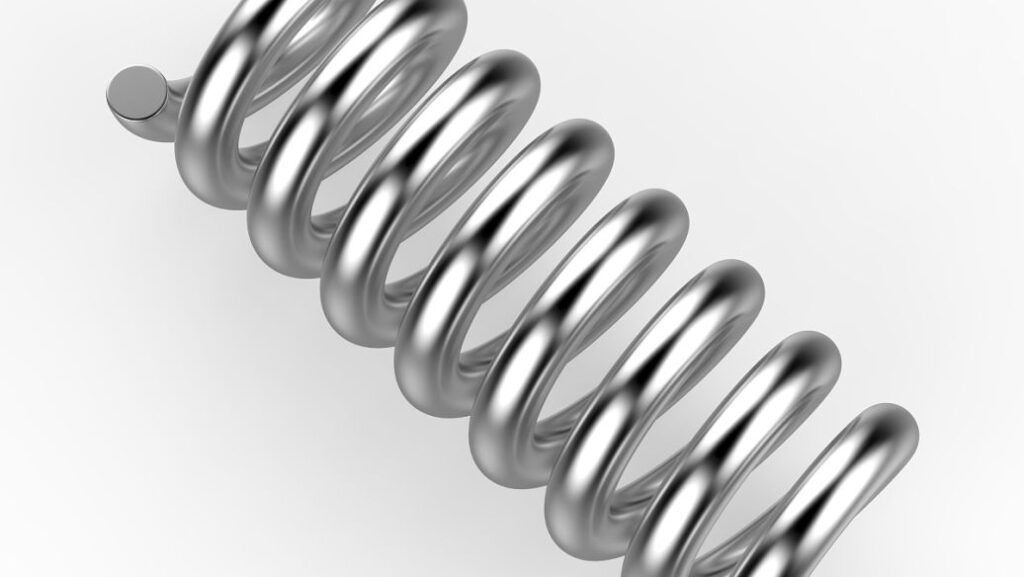Metal protective coating of spring
There are many kinds of metal protective layers. For springs, the metal protective layer is usually obtained by electroplating. The electroplating protective layer can not only protect the spring from corrosion, but also improve the appearance of the spring. Some electroplated metals can also improve the working performance of springs, such as improving surface hardness, increasing wear resistance, improving thermal stability, preventing ray corrosion, etc. However, if it is only for the corrosion of spring, electro galvanized layer and electro cadmium layer shall be selected generally.
Electrodeposited zinc and cadmium coatings
Zinc is stable in dry air, hardly changes and is not easy to change color. In humid air, a white film of zinc oxide or carbon zinc carbonate will be formed. This dense film prevents further corrosion. Therefore, the zinc coating is used as the anti-corrosion protective layer of the spring under general atmospheric conditions. Zinc coating should not be used for springs that are in contact with sulfuric acid, hydrochloric acid, caustic soda and other solutions, and work in humid air in sulfur trioxide and other atmosphere.
Generally, the galvanized coating is passivated after plating, which can improve the protective performance of the coating and increase the appearance of the surface.
In the marine or high-temperature atmosphere, as well as the spring in contact with seawater, the spring used in 70 ℃ hot water has relatively stable cadmium and strong corrosion resistance. Cadmium coating is brighter and more beautiful than zinc coating, soft, better plasticity than zinc, and less hydrogen brittleness. It is most suitable for spring as protective layer. However, cadmium is rare, expensive, and cadmium salt is toxic, which is very serious to the environment. Therefore, it is limited in use. Therefore, most springs used only in aviation, navigation and electronic industry use cadmium coating as protective layer.
In order to improve the corrosion resistance of cadmium coating, passivation treatment can be carried out after plating.
The thickness of zinc and cadmium coating determines the protection ability. The thickness shall generally be selected according to the working environment during use, and the thickness of zinc coating is recommended to be 6 ~ 24 / μ M; The thickness of cadmium plating layer is recommended to be 6 ~ 12 μ Select within M.
Zinc plating and cadmium plating of springs are carried out in cyanide electrolyte. In the electroplating process, in addition to zinc or cadmium plating, some reduced hydrogen seeps into the lattice of the coating and base metal, causing internal stress and making the coating and spring on the spring brittle, also known as hydrogen embrittlement. Due to the high strength of the spring material and the large deformation during spring forming, it is particularly sensitive to hydrogen embrittlement. If the hydrogen is not removed in time, the spring will often break. In order to eliminate some defects in the electroplating process, improve the physical and chemical properties of the spring, prolong the service life of the spring and improve the corrosion resistance of the coating, post plating treatment must be carried out, That is, dehydrogenation treatment. The dehydrogenation treatment is carried out immediately or within a few hours after electroplating. The purpose of hydrogen removal can be achieved by heating the plated spring at a temperature of 200 ~ 215 ℃ for 1 ~ 2H (or more than 2H).
Hydrogen removal is generally carried out in the oven. The effect of hydrogen removal is related to temperature, time and residence time after electroplating. Generally speaking, high temperature, long heating time and short pause time after plating have good hydrogen removal effect. Therefore, the selection of spring hydrogen removal temperature can be higher.
In addition to the above zinc plating and cadmium plating, the metal protective layer also includes copper plating, chromium plating, nickel plating, tin plating, silver plating, galvanized titanium alloy, etc. the spring designer can choose the coating according to the working occasion of the spring.







